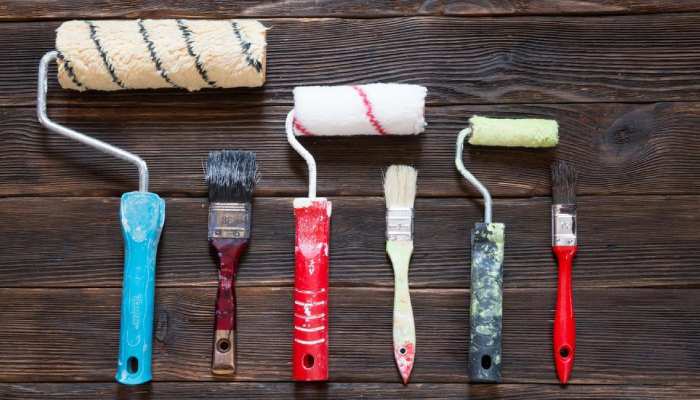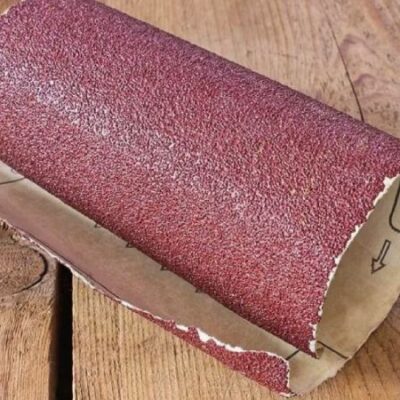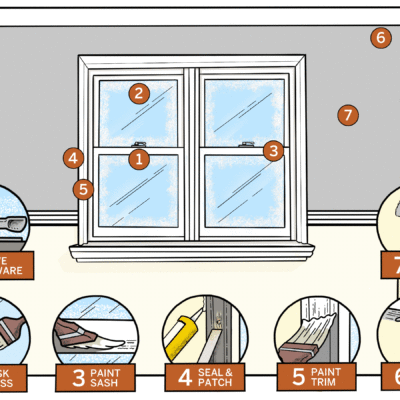How to Use a Paint Brush

Taking your time when painting window frames, skirting, doors, and moldings will pay off in the end. White paint drips off a brush and back into the can.
Improving your brushing skills
For the best results, paint in sections and stop when you reach a natural break. Never attempt to paint over a dried section since you will leave brush marks behind. If you spot a run in the wet paint, cover it as soon as possible with light even paint strokes.
Using a paintbrush to blend the paint into a wall corner
When painting an inside wall, you have to cut it in.
Using a paintbrush
Just flick the bristles back and forth to get rid of dust before use. Next, dip the brush into the water if you use water-based paint or mineral turpentine with oil-based paint. Before you start painting, be sure to wipe away any excess liquid.
Dip the brush in until it is about halfway full
Don’t wipe the brush harshly against the lip of the can; instead, tap it gently against the side. As you brush, the bristles should bend slightly; don’t use too much pressure, but let the paint run freely.
Use gentle, even strokes and paint back into the wet edge as you move from the top down.
To achieve an even coat when brush painting a large surface, start by applying paint to a square around 50cm * 50cm, brushing it in horizontal strokes to spread it out, then finishing with gentle vertical strokes in the same direction. Start by painting the area’s borders with a brush and roller.
Paint application pads
Wherever there are many corners to avoid, you can use application pads to cut in.
With a paintbrush, you can easily fill the pad with color.
Mount it on the wall, wipe down the guide wheels, then roll it along the architrave, skirting board, or corner.
Apply steady, consistent pressure in long, smooth strokes.









